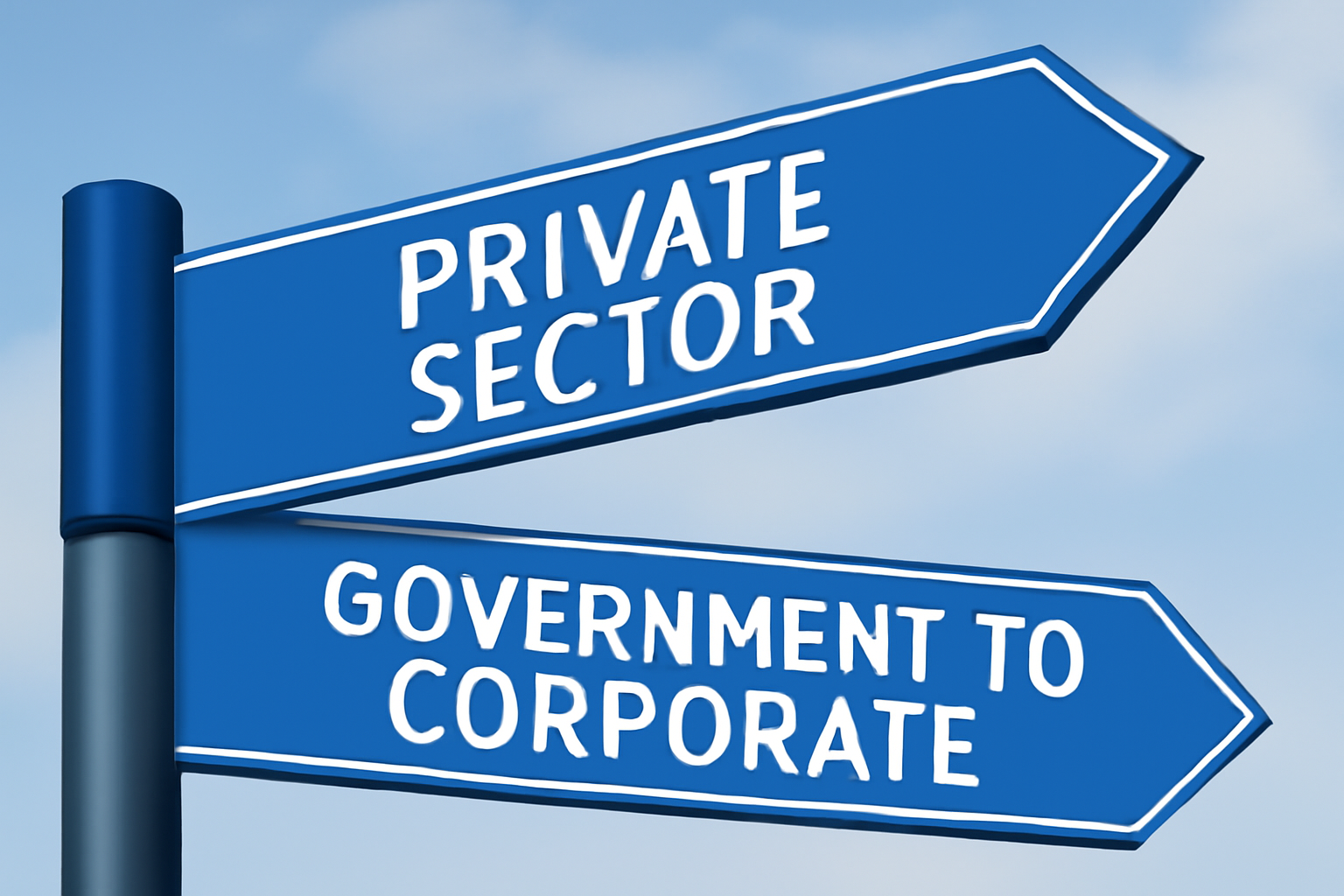1. The Pace of Work: Moving from Government to Corporate Speed
In government roles, work tends to be steady, with a focus on long-term goals and gradual progress. On the other hand, corporate environments thrive on fast-paced, results-oriented work, where decision-making and progress are often much quicker.
How to Adapt to the Corporate Pace:
- Embrace Agility: Corporate settings require flexibility, so being adaptable to changing priorities will help you succeed.
- Focus on Impact: Success in the corporate world often depends on your ability to make decisions and contribute to goals quickly and efficiently.
2. Decision-Making: From Consensus to Speed in Corporate Culture
In government environments, decisions are often slow and involve multiple layers of approval. In contrast, corporate culture favors quicker, more autonomous decisions.
How to Adapt to Corporate Decision-Making:
- Be Confident: Making timely decisions is valued in the private sector. Trust your judgment and act efficiently.
- Know the Power Structure: Learn who can approve what, and navigate accordingly.
According to a Harvard Business Review study, companies that act quickly outperform their peers by up to 20% in productivity.
3. The Work Environment: From Formality to Flexibility
Government jobs typically follow rigid structures. In contrast, many corporate workplaces are increasingly dynamic, with open office plans, hybrid roles, and flexible work hours.
How to Adapt to Flexible Corporate Environments:
- Welcome Flexibility: Expect change. Be ready for shifting priorities and less rigid routines.
- Encourage Innovation: Bring forward your ideas—creativity is rewarded in corporate settings.
This shift is part of a broader trend—see how it’s evolving in this SHRM overview on remote work.
4. Communication Styles: Formality vs. Collaboration in Corporate Culture
In government, communication tends to be formal and document-heavy. In corporate culture, it’s often informal and tool-driven—think instant messages, quick huddles, and async video updates.
How to Adapt Your Communication Style:
- Learn New Tools: Slack, Teams, Zoom—get comfortable with tech-driven communication.
- Collaborate Frequently: Expect open conversations and quicker feedback loops.
A McKinsey report shows that collaborative workplaces enjoy 25% higher employee satisfaction.
5. Work-Life Balance: From Government Stability to Corporate Flexibility
Government roles often provide consistent schedules. But in the corporate world, flexibility comes with accountability. You may gain freedom—but also need to manage your own limits.
How to Adapt to Corporate Work-Life Balance:
- Set Boundaries: Don’t let flexibility blur into burnout. Create a realistic schedule that works for you.
- Use Support Systems: From mental health benefits to wellness programs, private companies often provide tools to help.
This aligns with findings from Gallup’s research on hybrid workplace expectations.
Embrace the Transition to Corporate Culture with Confidence
The shift from government to corporate culture can be challenging—but it can also be deeply rewarding. As you adapt to faster workflows, informal communication, and flexible structures, keep your focus on learning and growing.
This isn’t just a change in jobs—it’s a change in mindset. With openness and curiosity, you’ll thrive in your new environment.
Key Takeaways:
- Understand pace and structure differences between government and corporate workplaces.
- Adapt your communication and decision-making approach.
- Embrace corporate flexibility while maintaining boundaries and wellness.

